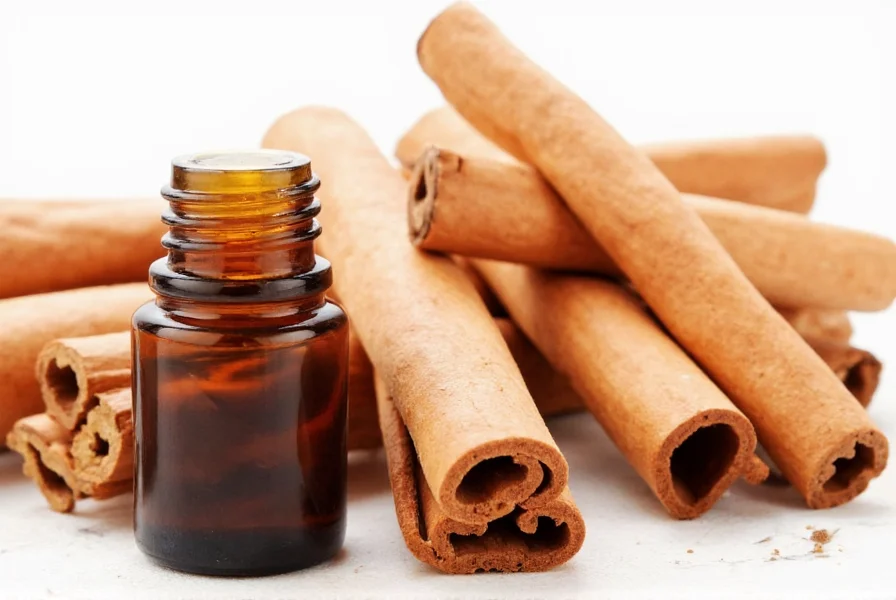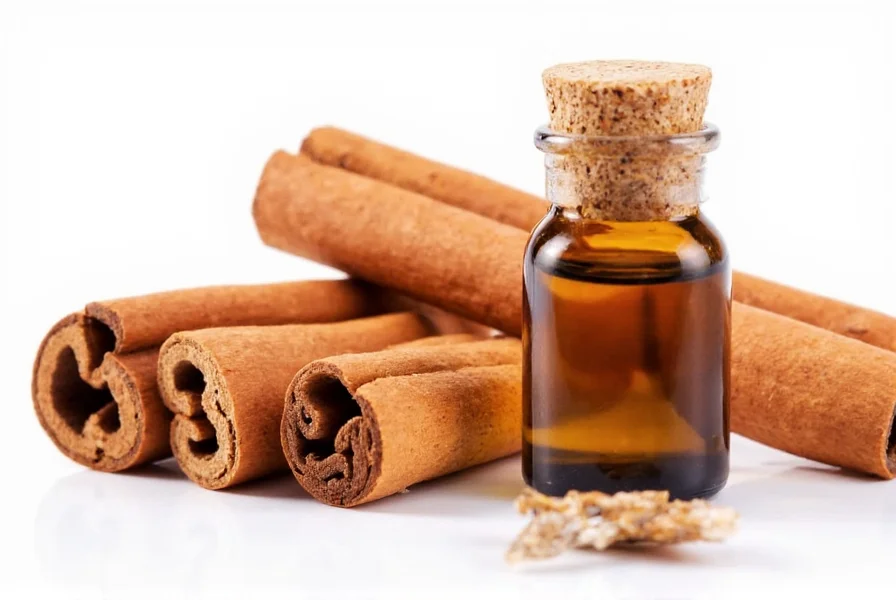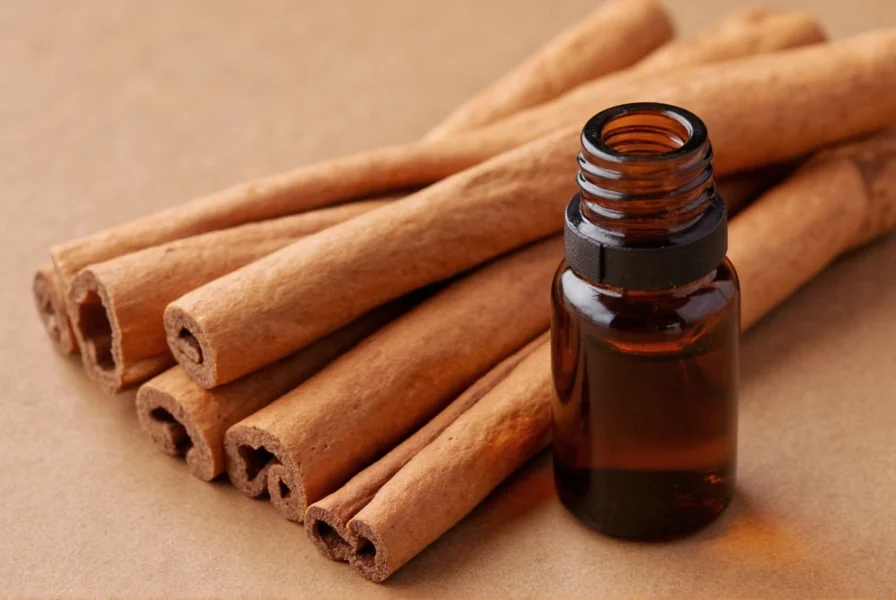Cinnamon oil has gained popularity in natural wellness circles, but understanding its proper use and limitations is crucial for safe application. This comprehensive guide explores the science-backed facts about cinnamon oil, separating evidence-based uses from common misconceptions.
Understanding Cinnamon Oil Varieties
Cinnamon oil isn't a single product but rather refers to several distinct preparations derived from different parts of the cinnamon plant. The two primary commercial varieties come from Cinnamomum verum (Ceylon cinnamon) and Cinnamomum cassia (Cassia cinnamon), with significant differences in chemical composition and safety profiles.
| Type of Cinnamon Oil | Primary Source | Key Chemical Components | Concentration Guidelines |
|---|---|---|---|
| Bark Oil (Cassia) | Cinnamomum cassia bark | 70-90% cinnamaldehyde | 0.5-1% dilution for topical use |
| Bark Oil (Ceylon) | Cinnamomum verum bark | 50-75% cinnamaldehyde | 1-2% dilution for topical use |
| Leaf Oil | Cinnamon tree leaves | 70-85% eugenol | 1-2% dilution for topical use |
The distinction between these varieties matters significantly for safety. Cassia cinnamon oil contains higher levels of coumarin, a compound that may cause liver issues with prolonged internal use. Ceylon cinnamon oil, sometimes called "true cinnamon," contains substantially less coumarin and is generally preferred for therapeutic applications.
Scientifically Supported Properties of Cinnamon Oil
Research into cinnamon oil has revealed several evidence-based properties, though it's important to understand the current scientific limitations. Studies published in the Journal of Agricultural and Food Chemistry have confirmed cinnamon oil's antimicrobial effects against certain bacteria and fungi, making it potentially useful for surface cleaning applications.
When examining cinnamon oil benefits for skin care, research suggests potential anti-inflammatory effects, but these studies typically use highly controlled laboratory conditions rather than real-world applications. A 2020 review in Phytotherapy Research noted that while preliminary studies show promise, more rigorous human trials are needed to confirm many purported benefits of topical cinnamon oil use.

Safe Application Practices for Cinnamon Oil
Proper dilution represents the most critical safety consideration when using cinnamon oil. Due to its high concentration of active compounds, undiluted application frequently causes skin irritation, burns, or allergic reactions. For most adults, a safe starting dilution is 1% (approximately 6 drops per ounce of carrier oil like coconut or jojoba oil).
Before widespread application, always perform a patch test by applying diluted oil to a small area of skin and waiting 24 hours to check for reactions. Certain populations should exercise particular caution:
- Pregnant women should avoid cinnamon oil due to potential uterine stimulation effects
- Individuals with diabetes should consult healthcare providers as cinnamon may affect blood sugar
- People with sensitive skin or known cinnamon allergies should avoid topical use
- Never apply undiluted cinnamon oil near mucous membranes or on broken skin
Evidence-Based Uses vs. Common Misconceptions
While cinnamon oil appears in numerous DIY wellness recipes, understanding what's supported by research versus anecdotal claims is essential. Evidence supports limited applications:
Supported uses: As a natural household cleaner due to antimicrobial properties, in aromatherapy for potential mood enhancement, and as a flavoring agent in extremely small, food-grade quantities.
Common misconceptions: Claims that cinnamon oil can treat serious medical conditions like diabetes, cancer, or infections lack sufficient scientific backing. While some laboratory studies show interesting properties, these don't necessarily translate to effective human treatments.
When researching cinnamon essential oil benefits, look for studies conducted on humans rather than test tubes or animals, and be wary of sources making dramatic health claims without scientific references. The concentration used in laboratory studies often far exceeds what would be safe for human application.
Storage and Shelf Life Considerations
Cinnamon oil maintains potency for 1-2 years when stored properly in dark glass bottles away from heat and light. Exposure to air, heat, or sunlight accelerates degradation of the active compounds. To maximize shelf life:
- Store in a cool, dark place (not the bathroom due to humidity)
- Keep bottles tightly sealed when not in use
- Avoid transferring to plastic containers (oil can degrade plastic)
- Check for changes in scent or color, which indicate degradation

Integrating Cinnamon Oil into Daily Routines
For those interested in exploring cinnamon oil uses safely, consider these evidence-informed approaches:
Aromatherapy: Add 2-3 drops to a diffuser with water for a warm, inviting scent that may enhance mood during colder months. This represents one of the safest methods of enjoying cinnamon oil's aromatic benefits without risk of skin irritation.
Household cleaning: Combine 10-15 drops with 1 cup of water and ¼ cup white vinegar in a spray bottle for an effective natural surface cleaner with antimicrobial properties.
Seasonal support: During cold and flu season, some people add 1-2 drops of properly diluted cinnamon oil to chest rubs, though scientific evidence for respiratory benefits remains limited. Always ensure proper dilution to prevent skin irritation.
Remember that cinnamon oil should complement—not replace—standard medical care. When considering cinnamon oil for skin care or other therapeutic applications, consult with a healthcare provider familiar with essential oil safety, especially if you have underlying health conditions or take medications.
Can cinnamon oil be used directly on skin without dilution?
No, cinnamon oil should never be applied directly to skin without dilution. Its high concentration of cinnamaldehyde can cause severe skin irritation, chemical burns, or allergic reactions. Always dilute to 0.5-2% concentration (approximately 3-12 drops per ounce of carrier oil) before topical application, and perform a patch test 24 hours before widespread use.
What's the difference between cinnamon bark oil and cinnamon leaf oil?
Cinnamon bark oil contains higher concentrations of cinnamaldehyde (70-90%), giving it a stronger, spicier scent and greater potential for skin irritation. Cinnamon leaf oil contains more eugenol (70-85%), resulting in a milder, clove-like aroma with less risk of skin sensitivity. Both have different chemical profiles and uses, with leaf oil generally being safer for topical applications.
Is cinnamon oil safe for internal consumption?
Internal use of cinnamon oil requires extreme caution and should only be done under professional guidance. Cassia cinnamon oil contains significant coumarin, which can cause liver damage with regular consumption. Even Ceylon cinnamon oil is highly concentrated and can irritate mucous membranes. Most healthcare professionals recommend against internal use of essential oils without specific medical supervision.
How does cinnamon oil compare to other essential oils for antimicrobial use?
Research shows cinnamon oil has strong antimicrobial properties, often outperforming many common essential oils against certain bacteria and fungi in laboratory settings. However, its potency also means it requires more careful handling than milder oils like lavender or tea tree. For household cleaning, cinnamon oil can be effective but should be properly diluted and not used on all surfaces, as its compounds may damage certain materials.











 浙公网安备
33010002000092号
浙公网安备
33010002000092号 浙B2-20120091-4
浙B2-20120091-4